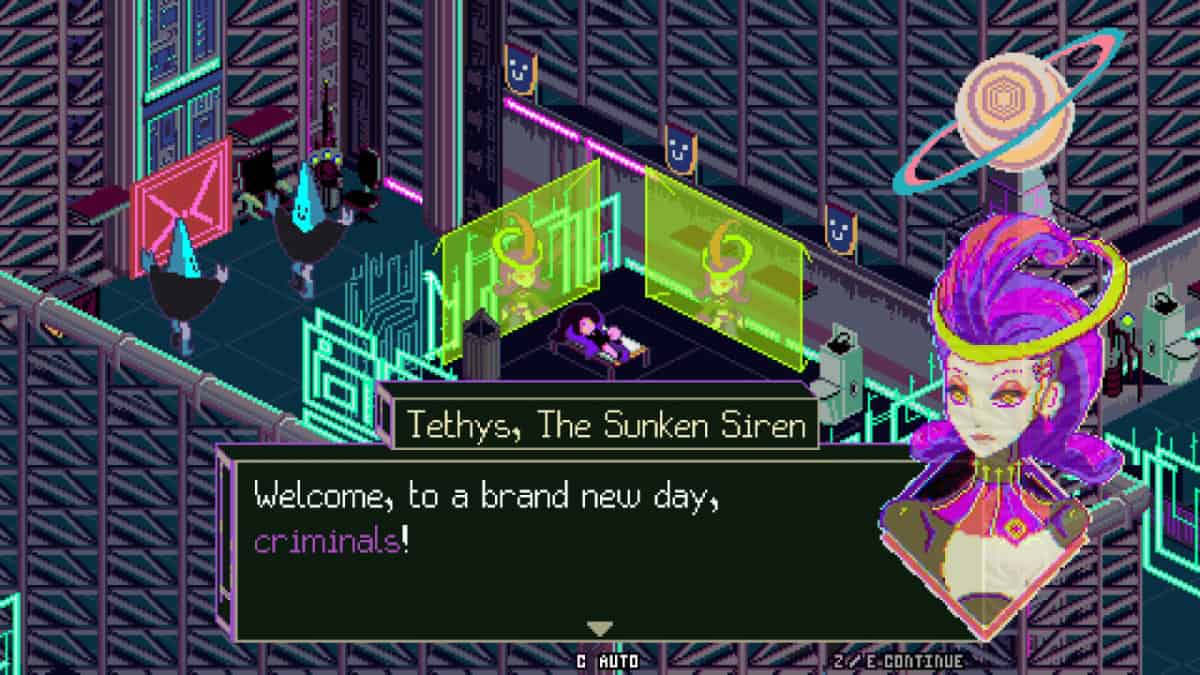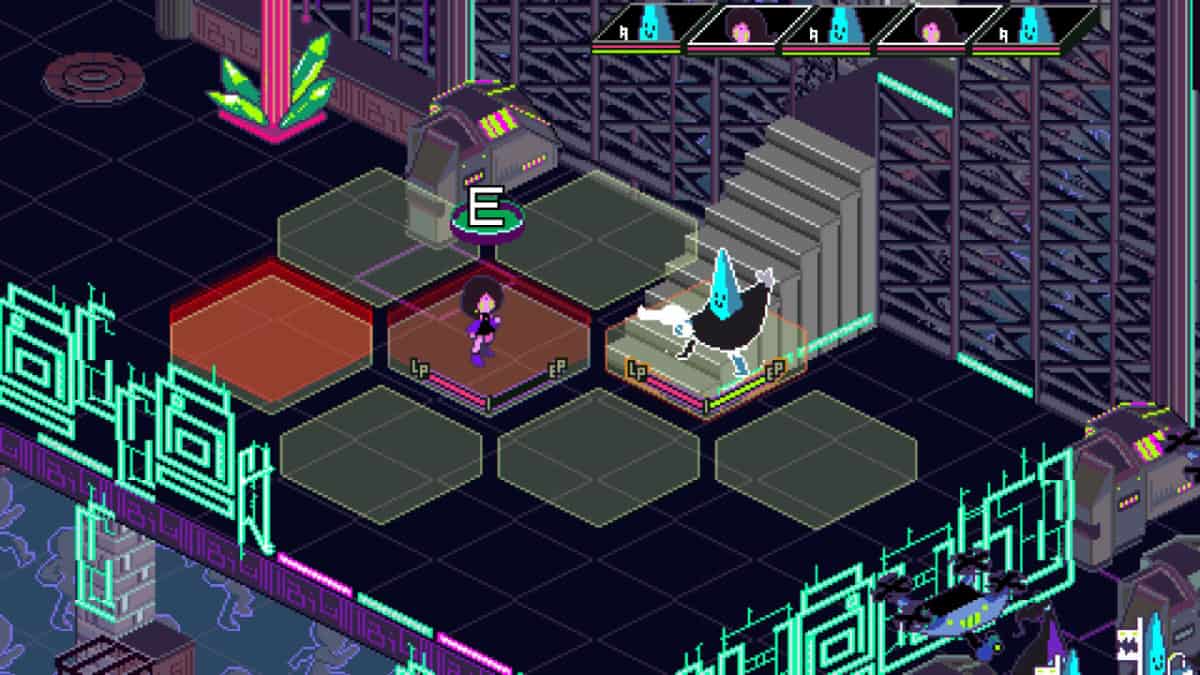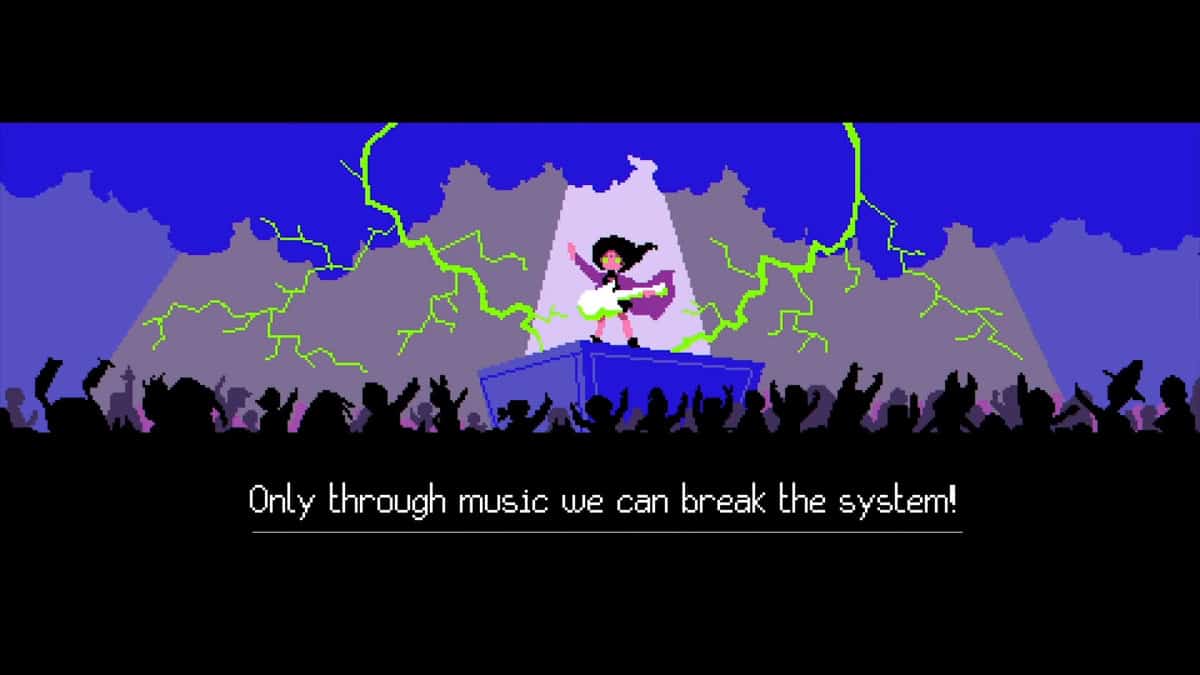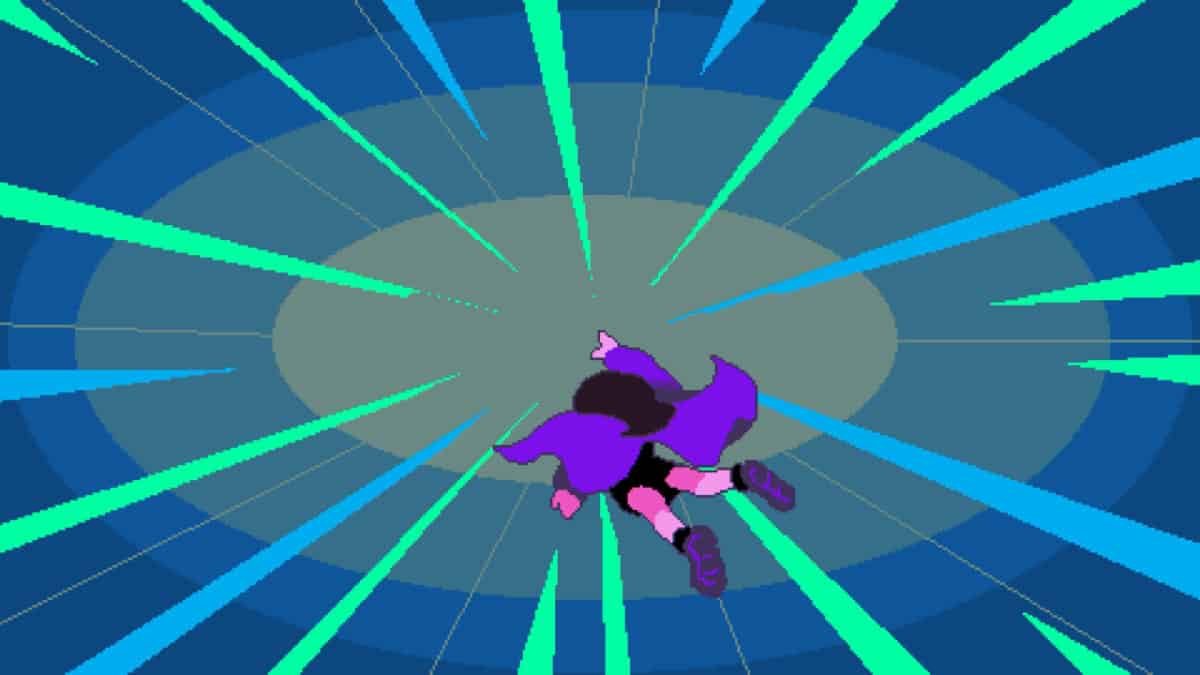Skip To...
Despite the popularity of games like Cyberpunk 2077, the whole cyberpunk genre in gaming has remained a niche affair. You usually have to dig deep to find the gems, and when you do, most of them tend to be indie titles. In hindsight, it might be better off that way, given how cyberpunk is inherently anti-establishment and anti-corporation. That’s why indie cyberpunk games like Keylocker tend to understand its genre best.
Keylocker is a turn-based cyberpunk action game that’s as unique as it’s funky. Developer Moonana and publisher Serenity Forge have given us a glimpse of what their game is all about in its early stages.
It Puts the Punk in Cyberpunk
It’s not a fully-fledged CRPG, and I only got to play as one character named B0B0 (with two zeros in her name, indicating that she’s really keewl). B0B0 is a cybergoth rockstar girl in the futuristic cyberpunk techno-religious dystopian setting where humanity has colonized as far as Saturn.
The problem for B0B0 is that music was outlawed by the authorities. Of course, this being a cyberpunk story about rebellion and anarchy, B0B0 kept playing her brand of alternate rock. This landed her in prison and you must now escape and launch your musical revolution in defiance of the authorities.
You can’t get more cyberpunk than that. You also have to admit that “sticking it to the man” is a lot cooler with an electric guitar that also deals electric damage.
Of course, I can’t fully judge it yet since what I got to play was but a mere introductory fragment of a bigger narrative. Still, it’s refreshing for a cyberpunk game to go for a more straightforward story that doesn’t involve slow-burn conspiracies about corporations.
The game lets its gameplay do most of the heavy lifting, at least at the beginning.
New Tune, Old Instrument
After a few short establishing cutscenes, you’re thrown right into the action and must then break free from imprisonment.
The game does a surprisingly decent job of telling you what to do and where to go. And as I stated before, combat is turn-based.
However, don’t let that put you off if you were expecting something more twitchy or action-packed. While you can relax a bit during your turn in Keylocker, the game’s turn-based combat will still demand and hold your attention for most of the proceedings.
Keylocker does this with one clever trick– by allowing a rhythm-based parry and dodging system. You can parry your enemy’s attacks during combat, even if it’s their turn. This lets you feel more involved compared to other turn-based combat games where you can merely stand and watch while the enemy tears your characters like wet paper.
With the right timing and practice, you can even perform some clutch moves against overwhelming odds. So, the way the cyberpunk rebellion spirit meshes with the gameplay is a lovely touch of meta-design (even though it might not have been consciously implemented).
The downside, of course, is that the parry system goes both ways. The enemies can also parry and counter your attacks during your turn.
In any case, the combat is quite promising, even from what little I’ve seen. That, paired with the other gameplay aspects such as the rhythm-based music hacking mini-games and tidbits like stealth, makes the game feel less linear.
If Fashion Was a Crime, It’s Guilty
Almost immediately, Keylocker will set its tone with the visuals. Its simple 16-bit graphics are a callback to the old retrofuturistic vibe of the 1980s.
This kind of style has become the go-to for plenty of small indie developers ever since Stardew Valley showed graphics aren’t all that matter in video games. Keylocker has taken this technical approach and managed to breathe a new cutesy punk charm into it despite the supposed bleakness of its game world and setting.
Where Keylocker excels is through its more distinct and darker visual style. To say that character design is special here is an understatement. Everyone is oozing with style and personality– even the villains.
If the game manages to keep this tempo consistent, you can expect a memorable journey even with the simple graphics. The game’s sense of style and sharp artwork balance that out.
The Audio? It Rocks!
Of course, it does, the game’s pitch is literally “cyberpunk music rebellion rhythm JRPG.” Your character is a warrior poet. There are some original bangers in its soundtrack. You’ll know right away that the game is a labor of love.
And the game knows this. That’s why some of its combat moves and even mini-games (or even boss fights) are rhythm-based Guitar Hero-esque segments.
Even without its awesome soundtrack, the ambient sounds are enough to draw you into the depressing and figuratively grey cyberpunk setting devoid of music. It’s the game telling you that it’s your canvas.
Only a Few Off-Key Aspects Short of a Potential Hit
While I did shower the game with praise even in its early stage, do remember that this is an early impression and not a review. It’s too early to render judgment.
There are some notable areas that the game still needs to be re-tuned, such as the user interface’s accessibility. While the 16-bit text is a thematic, hyper-stylized touch, it’s not the most practical option and is quite an eyesore.
At the very least, the game ought to give an option for a less noisy UI. In its current state, the color diarrhea can be headache-inducing even if you can change the palette in the menu. Parry timings can also often feel unforgiving, even in the easiest difficulty. These are minor gripes, and given more development hours, you can expect them to be fixed or adjusted over time.
Keylocker‘s set to be released around late Summer 2024, and it will be available on the PC, PlayStation 5,












